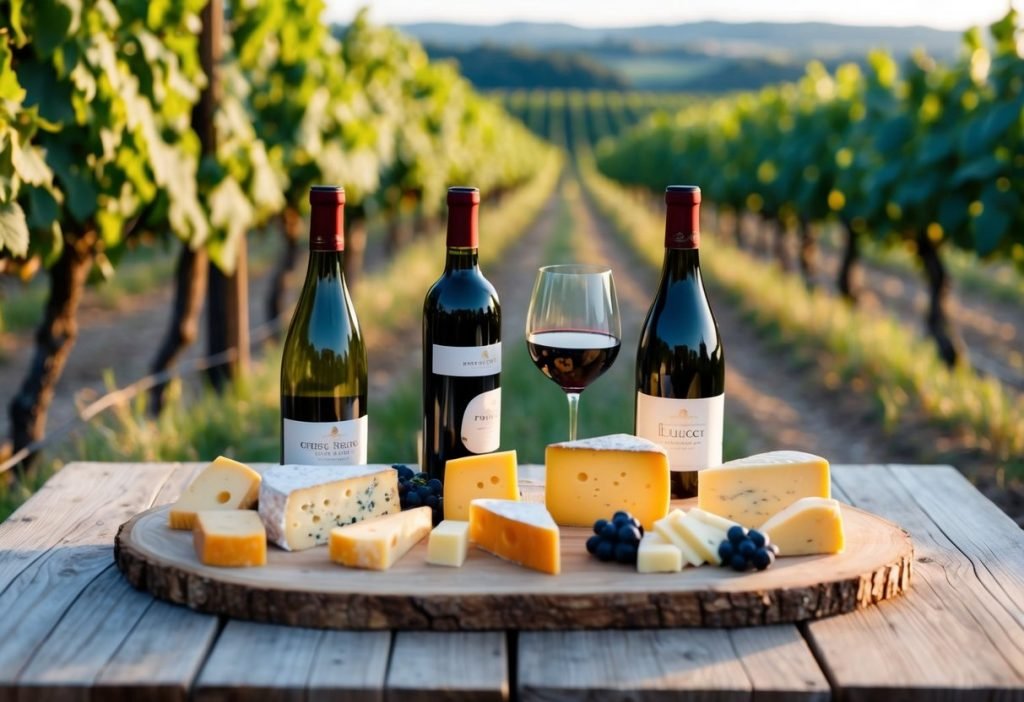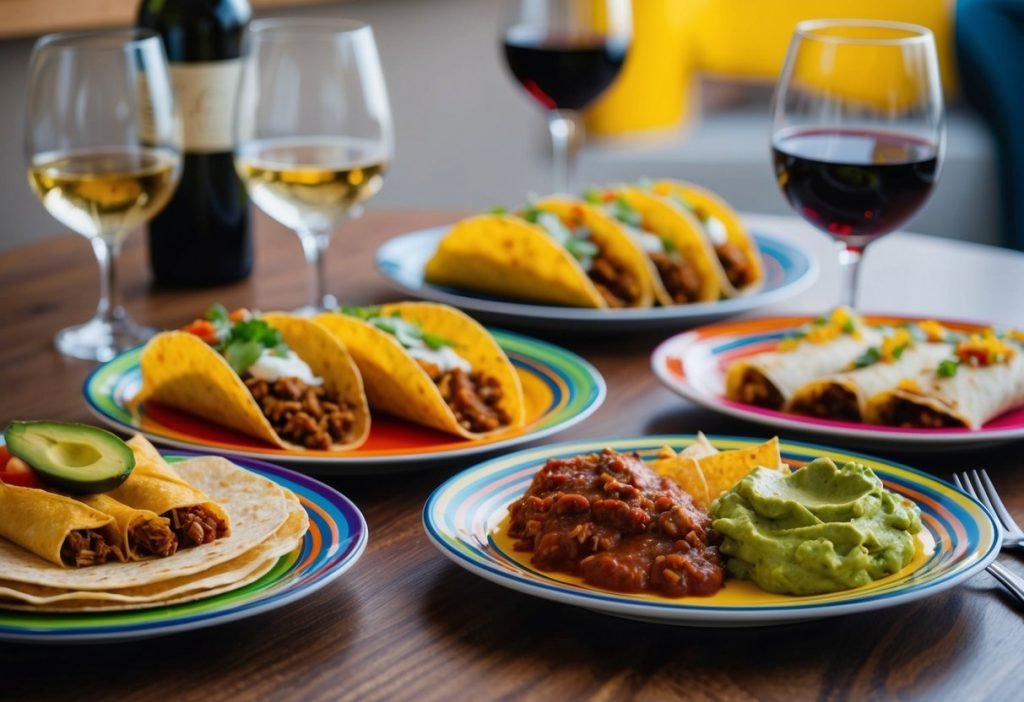Finding the right wine to complement cheese can elevate the dining experience, enhancing the flavors of both. Some of the best wine and cheese pairings include rich reds like Cabernet Sauvignon with aged Cheddar, and crisp whites such as Sauvignon Blanc with tangy goat cheese. This pairing journey not only pleases the palate but also opens up a world of taste exploration.

Taste is subjective, and the variety of cheeses available means there’s a perfect wine for every type. From creamy Brie to sharp blue cheese, each variety has its ideal match. Exploring these combinations can lead to delightful surprises and enhance meals, gatherings, or quiet evenings at home.
Pairing wine with cheese can seem intimidating, but it doesn’t have to be. Understanding the characteristics of both can simplify the process significantly. With the right guidance, anyone can navigate the world of wine and cheese pairings with confidence.
Essentials of Cheese and Wine Pairing
Pairing cheese with wine involves understanding the flavors, textures, and characteristics of each. Key components include flavor profiles, the texture and fat content of cheese, and the impact of wine acidity and tannins.
Understanding Flavor Profiles
Flavor profiles are essential in cheese and wine pairing. Different cheeses offer a range of flavors, from sharp and tangy to creamy and nutty. A general rule is to match the intensity of the cheese with the wine. For example, robust cheeses like aged cheddar pair well with bold red wines, while soft, milder cheeses, such as Brie, complement lighter whites.
Flavor Pairing Suggestions:
- Soft Cheeses: Pair with Sauvignon Blanc or Champagne.
- Blue Cheeses: Scheming with Port or a bold red like Cabernet Sauvignon works well.
- Hard Cheeses: Match aged gouda or Parmigiano-Reggiano with Chardonnay or a medium-bodied red.
The Role of Texture and Fat Content in Cheese
Texture and fat content play significant roles in pairing decisions. Creamy cheeses, like mascarpone or triple cream brie, coat the mouth, requiring a wine with higher acidity to cleanse the palate. In contrast, drier and firmer cheeses, including aged Gouda or pecorino, may work well with wines that have substantial tannins.
Key Points:
- Creamy Textures: Pair with acidic wines (e.g., Riesling).
- Firm Textures: Use wines with tannins (e.g., Chianti).
- Mixed-textured Platters: Offer a variety of wines to balance all textures.
Impact of Wine Acidity and Tannins
Wine acidity and tannins significantly affect the pairing experience. High acidity wines, such as Sauvignon Blanc, can highlight the flavors in a cheese. Tannins, present in red wines like Merlot, provide structure but can also overwhelm delicate cheeses. The balance between wine and cheese should aim for harmony.
Considerations:
- Acidity Levels: High-acid wines counter rich cheeses effectively.
- Tannin Levels: Low tannin wines are better with soft, creamy cheeses.
- Personal Preference: Individual tastes should guide choices as well.
Classic Wine and Cheese Pairings
Selecting the right wine to complement cheese enhances both flavors and creates a memorable tasting experience. The combinations of red wines, white wines, and sparkling wines with various cheeses offer diverse flavor profiles and textures.
Red Wines with Hard Cheeses
Red wines pair excellently with hard cheeses due to their bold flavors and tannins. Choices like Cabernet Sauvignon or Merlot match well with aged Cheddar and Gouda. The rich, nutty flavors of these cheeses harmonize with the fruit-forward characteristics of the wine.
Another great option is a Barolo, which works beautifully with Parmigiano-Reggiano. Its robust structure stands up to the cheese’s sharpness. Additionally, an earthy Pinot Noir complements Gruyère, as the wine’s acidity cuts through the cheese’s richness, creating a balanced palate.
White Wines with Soft Cheeses
Soft cheeses often pair better with white wines, as their lighter profiles enhance delicate flavors. A classic match is Brie with Chardonnay. The buttery texture of Brie harmonizes with the wine’s oakiness.
Sauvignon Blanc is ideal for Goat cheese due to its crisp acidity and herbaceous notes. This combination brightens the cheese’s tanginess. Another pairing is Camembert with Pinot Grigio, where the wine’s refreshing qualities highlight the cheese’s creaminess without overpowering it.
Sparkling Wines with Creamy Cheeses
Sparkling wines serve as versatile partners for creamy cheeses, providing effervescence that cuts through richness. An aged Champagne pairs wonderfully with triple-cream cheeses like Saint André, as the wine’s crisp bubbles cleanse the palate.
Prosecco works well with Ricotta cheese. Its light, fruity profile complements the cheese’s mild flavor. Furthermore, sparkling rosé is an excellent choice for creamy blue cheeses, balancing the boldness with refreshing fruitiness, establishing a delightful contrast.
Regional Pairing Suggestions

Wine and cheese pairings can greatly enhance the dining experience, with regional choices often reflecting local traditions and flavors. The following sections explore popular European pairings and innovative selections from the New World.
European Favorites
In Europe, wine and cheese pairings are often rooted in tradition. For instance, French Brie pairs well with Chardonnay, where the wine’s acidity balances the cheese’s creaminess.
Italian Parmigiano-Reggiano finds a match with Barolo; the wine’s tannins complement the cheese’s salty, nutty flavor.
Spanish Manchego is delicious with Tempranillo, bringing the earthiness of the wine and the cheese’s buttery texture together.
Key pairings include:
| Cheese | Wine |
|---|---|
| Brie | Chardonnay |
| Parmigiano-Reggiano | Barolo |
| Manchego | Tempranillo |
These classic combinations enhance the appreciation of both the cheese and the wine.
New World Innovations
New World wines offer fresh perspectives on traditional pairings. For example, California Cabernet Sauvignon can effectively complement aged Gouda, with the wine’s bold flavors enhancing the cheese’s caramel notes.
Argentinian Malbec pairs well with blue cheeses, offering a contrast that highlights both the grape’s fruitiness and the cheese’s intensity.
Australian Shiraz is an excellent choice for goat cheese, where the wine’s spiciness pairs with the cheese’s tang.
A few notable pairings include:
| Cheese | Wine |
|---|---|
| Aged Gouda | Cabernet Sauvignon |
| Blue Cheese | Malbec |
| Goat Cheese | Shiraz |
These pairings exemplify how regional characteristics can lead to exciting new combinations.



